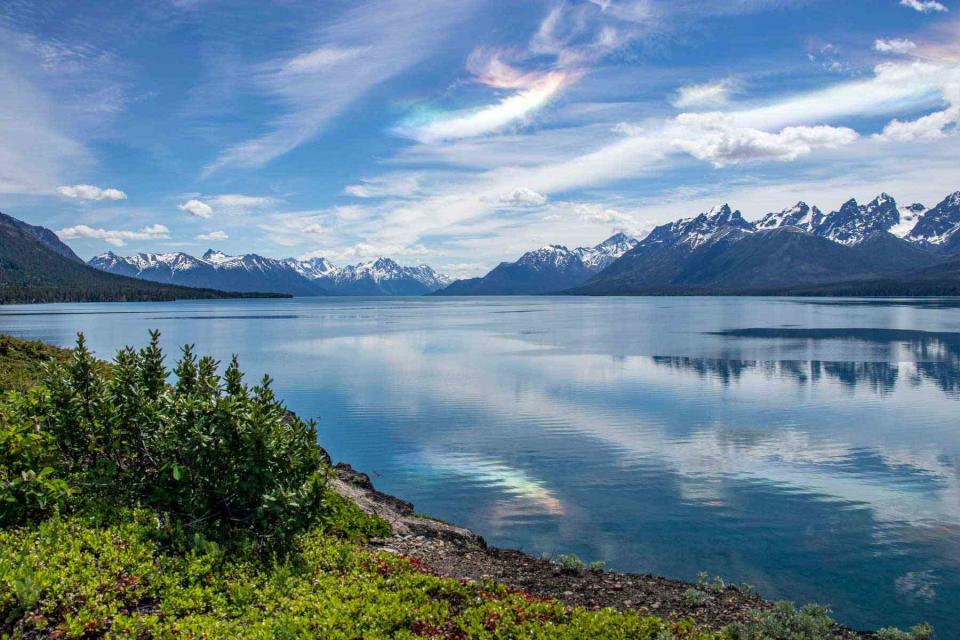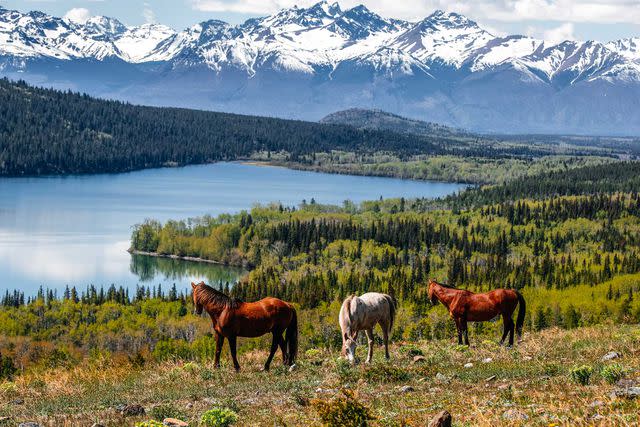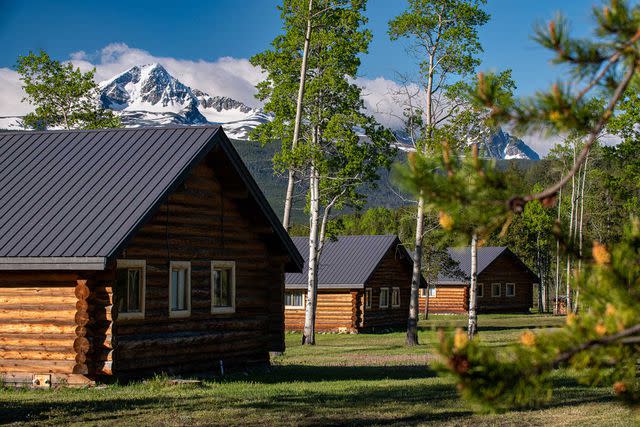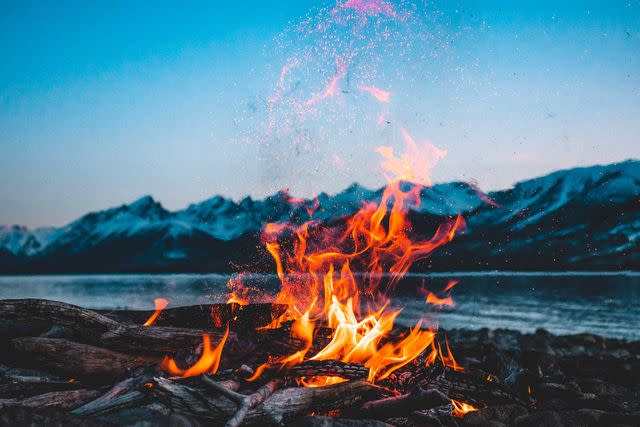This Indigenous-owned Lodge in British Columbia Encourages Guests to Connect With Nature in a Deeper Way
In the heart of the Chilcotin region, Nemiah Valley Lodge marks the only area in Canada acknowledged by the Supreme Court as having Indigenous title.

Keith Koepke
The horses gallop across a golden meadow hemmed by aspen and pine. Our group of travelers has pulled off to the side of the road, transfixed by the small herd. British Columbia’s remote Nemiah Valley is home to western Canada’s only wild horse preserve, and cast against the saw-toothed Coast Mountains, it’s a scene out of an Old Hollywood western.
The valley is nestled in the province’s interior Chilcotin region, an area marked not only by wild horses, but wild rivers and forests, too. Located a three-hour drive down a rumpled dirt road from Williams Lake, it’s a part of B.C. few see, and it comes as no surprise that the region has been dubbed British Columbia’s “Wild West." Tourism here has long been dominated by pioneer history and settler ranch culture, but a new wave of Indigenous-led tourism is changing the narrative. Long before settlers established working ranches, the Xeni Gwet’in First Nation tamed wild horses and rode them on packing trips through the mountains, following food sources throughout the seasons.

Keith Koepke
One of six First Nation communities that form the Tŝilhqot’in National Government, it’s this alternative history that the Xeni Gwet’in are hoping to impart to guests staying at the new Nemiah Valley Lodge, which opened this summer. The ecolodge is the first Indigenous-led tourism venture on Tsilhqot’in title lands after a landmark Supreme Court ruling awarded the First Nation rights and title to their traditional territory in 2014, a first in Canada. The ruling, known as the Tsilhqot’in Decision, upheld their right to hunt, fish, forage, and train wild horses on 1,900-square-kilometers of their territory.
The title win marked the end of a 25-year court battle, and an even longer struggle by the Tsilhqot’in Nation to protect their land and culture, dating back to the Chilcotin War of 1864 fought against incoming settlers. The Xeni Gwet’in purchased the former Elkin Creek Guest Ranch in 2019 and have spent the past several years renovating and rebranding it as Nemiah Valley Lodge. They envisioned the new lodge, which includes seven cabins, as a place to share Tsilhqot’in culture with guests through interpretive walks, outdoor adventures such as kayaking, artisan workshops like beading, and in the future, horseback riding.

Michael Bednar
The pulse of a drum fills the main lodge where we sit down to a dinner of maple salmon, or tse’man, the centuries-old staple food in the territory. Former chief Roger William is one of five Xeni Gwet’in cultural ambassadors at the lodge, and he’s welcoming our group with a traditional river song. “Tsilhqot’in means ‘river people’,” says William. Two of British Columbia's great salmon-bearing rivers — the Chilko and the Taseko — carve through the Nemiah Valley. “We survive off the river and it’s our job to protect it,” adds William. “With the title win, we’re bringing our power back to the land.”
Through the Nemiah Declaration of 1989 — in which the Xeni Gwet’in declared sovereignty over their traditional territory and paved the way for the title win in 2014 — and the Tsilhqot’in Decision, the First Nation has managed to ward off mining and logging in the territory. This kind of industrial development would not only have threatened their traditional ways of life by compromising the integrity of rivers and lakes, the lifeblood of their community, but also destroyed the very nature of Tsilhqot’in law, in which every living thing — from the rivers and trees to animals and people — embodies a spirit energy called tsin. “We think of ourselves as part of all creation,” says Xeni Gwet’in government administrator and cultural ambassador Dalton Baptiste the next day. “Nobody really owns this land; if anything, the land owns us.”

Keith Koepke
That afternoon, we hike up Cardiff Mountain through a fragrant, sun-baked pine forest. The mountain is home to some of the finest basalt columns in Canada, ochre cylinders that wrap around the northwestern mountainside like a modernist sculpture. The columns, along with several at-risk plant species have earned the area Ecological Reserve status. But to the Xeni Gwet’in, the mountain is important for other reasons, too. From the peak, where we stop for a picnic lunch under the midday sun, is one of the valley’s best views of Tsʼilʔos Mountain and Konni Lake.
Tsilhqot’in legend tells the story of a chief and his children who turned into a mountain above the lake, and now watch over the land. “The energy the mountains put out is what has helped us protect the land,” says Baptiste. “We ask them for strength and guidance.” We’re warned never to point at the mountain, which is a sign of disrespect, bringing bad luck for future travels.
On our last day, we paddle out onto Chilko Lake, part of Tsʼilʔos Provincial Park, which the Tsilhqot’in Nation co-manages with the provincial government. My kayak knifes through the aquamarine water. Only the melancholy wail of a loon and the rhythmic waves pierce the silence. The glacier-fed lake is the highest-elevation freshwater lake in Canada and spans 80 kilometers in length. I learn that it also acts as the headwaters of the Tsilhqot’in salmon rivers and is often used as a ceremony site because of its healing powers.
Looking out across its vast expanse, I’m humbled by the Xeni Gwet’in’s decision to share their traditions and culture with non-Indigenous visitors. It’s a gracious step toward understanding and reconciliation. For the First Nation, the right to practice traditional ways of life is as healing for themselves as it is for the land that they cherish and protect. William says, “Here, we’re starting over.”

